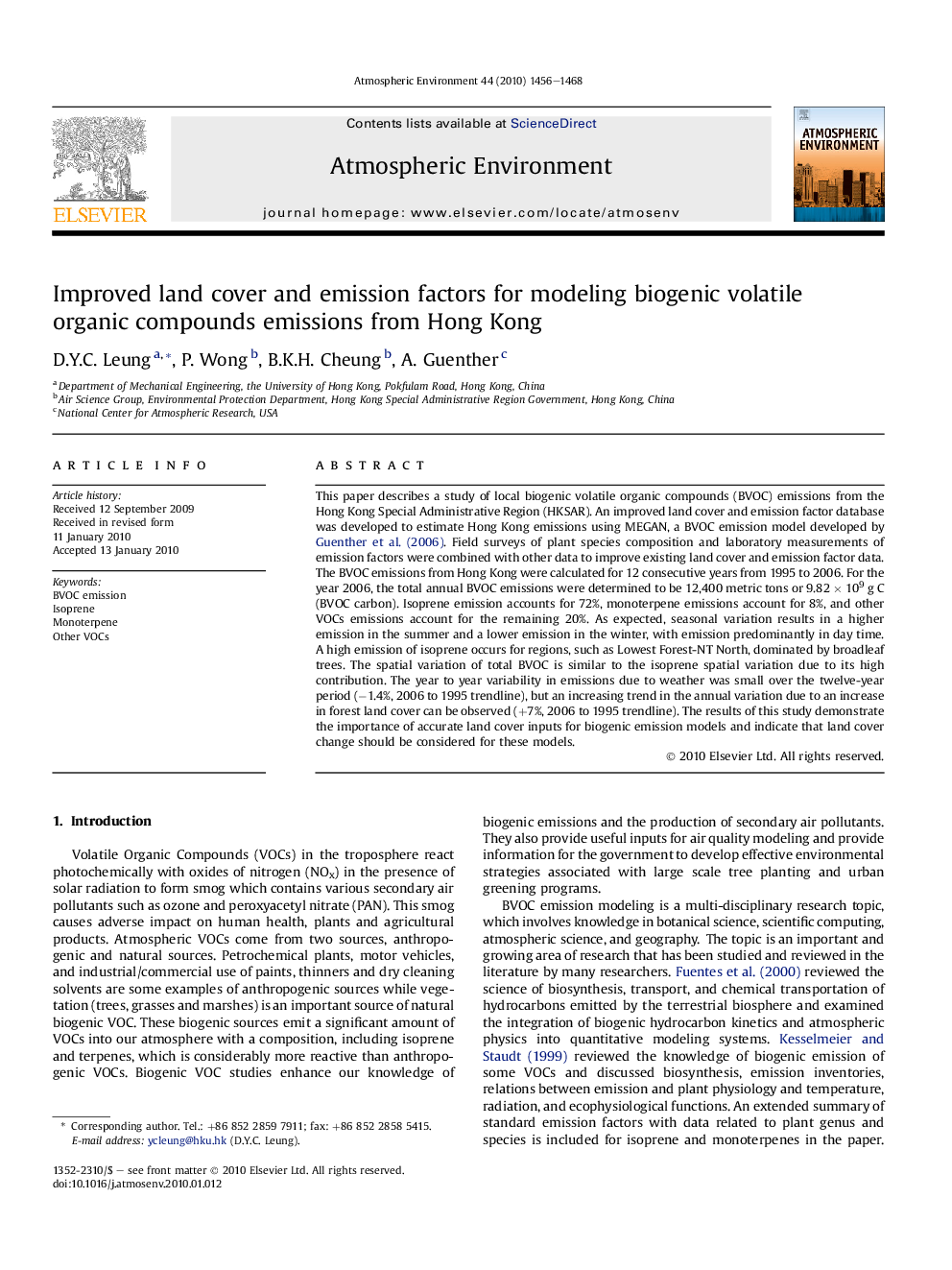| کد مقاله | کد نشریه | سال انتشار | مقاله انگلیسی | نسخه تمام متن |
|---|---|---|---|---|
| 4440980 | 1311086 | 2010 | 13 صفحه PDF | دانلود رایگان |

This paper describes a study of local biogenic volatile organic compounds (BVOC) emissions from the Hong Kong Special Administrative Region (HKSAR). An improved land cover and emission factor database was developed to estimate Hong Kong emissions using MEGAN, a BVOC emission model developed by Guenther et al. (2006). Field surveys of plant species composition and laboratory measurements of emission factors were combined with other data to improve existing land cover and emission factor data. The BVOC emissions from Hong Kong were calculated for 12 consecutive years from 1995 to 2006. For the year 2006, the total annual BVOC emissions were determined to be 12,400 metric tons or 9.82 × 109 g C (BVOC carbon). Isoprene emission accounts for 72%, monoterpene emissions account for 8%, and other VOCs emissions account for the remaining 20%. As expected, seasonal variation results in a higher emission in the summer and a lower emission in the winter, with emission predominantly in day time. A high emission of isoprene occurs for regions, such as Lowest Forest-NT North, dominated by broadleaf trees. The spatial variation of total BVOC is similar to the isoprene spatial variation due to its high contribution. The year to year variability in emissions due to weather was small over the twelve-year period (−1.4%, 2006 to 1995 trendline), but an increasing trend in the annual variation due to an increase in forest land cover can be observed (+7%, 2006 to 1995 trendline). The results of this study demonstrate the importance of accurate land cover inputs for biogenic emission models and indicate that land cover change should be considered for these models.
Journal: Atmospheric Environment - Volume 44, Issue 11, April 2010, Pages 1456–1468